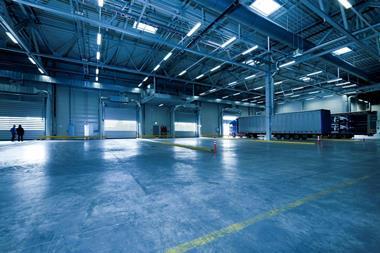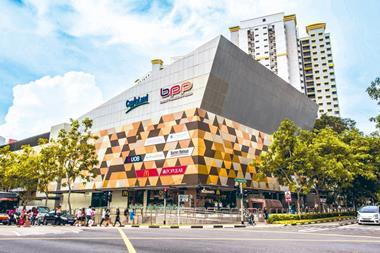The oil price surge that has burdened many countries has enabled the Gulf nations to continue a development wave of truly epic proportions. Improved transparency will further boost the region's prospects, as Ian Cundell reports
Such is the scale of development in the Middle East that consultants McKinsey last year warned New York mayor Michael Bloomberg that New York risked being relegated to a regional market, and this year London mayor Boris Johnson commissioned McKinsey to look at London in this light: the scale of growth in certain emerging markets is that big.
In the Middle East, although Bahrain was the initial focus of development, it is Dubai that has caught the imagination and become the focal point of growth: according to Nick Maclean, managing director of CBRE in the Middle East, there is about 33-35m ft2 of office stock in Dubai, with a further 80m ft2 either under construction or with start imminent.
Abu Dhabi and the United Arab Emirates boast office stock of 15-17m ft2 and both this area and Dubai have been characterised by strong rental growth amid little to no vacancy. Kuwait is a smaller market, but all things are relative: rising oil prices have so boosted Kuwait's national coffers that the petroleum-rich state is to invest $132bn (€90bn) on its ambitious Silk City at the head of the Gulf.
The extraordinary scale of the metropolis - a 1,001-metre skyscraper, wildlife reserves, and homes for 700,000 people - is matched by a plan to build an international rail network linking it to Damascus, Baghdad, Iran and China.
Inspired by Dubai's spectacular growth, the Madinat al-Hareer, or Silk City, is intended to create a trading future and a diversified economy in a city that would become a crossroads of the Arab world.
"We are not dreamers at all when we talk about investing $132bn," says Sami Alfaraj, president of the Kuwait Center for Strategic Studies and an adviser to the Gulf Cooperation Council, the group of six mostly oil-rich Gulf states.
The city, set for completion in 2023, will be linked to the capital, Kuwait City, by a dedicated mega-causeway. More important, it will also be linked to the rest of the Middle East, Europe and far-flung corners of the world, principally as a trade route.
Even in relatively conservative Saudi Arabia, property development is seen as the key to economic change, with real estate the country's fastest-growing sector.
Until now the bulk of finance has come from within the region: the oil rich states themselves. "It is a pretty unexplored market by most institutions," says Maclean.
Robin Williamson, head of Middle East at DTZ, agrees. "Investors only started arriving around two years ago and have tended to be more developer-investors," he says.
In part, this has been a reflection of local law: until recently restrictions on foreign ownership of land were very tight and even now are common, but there are also genuine issues that institutional-style investors are typically wary of.
Maclean notes that the area has many high profile statement buildings. "It's something of an architects' playground," he says. Perhaps the most high profile recent example is The Dynamic Tower, in Dubai, made up of 80 prefabricated apartments that will spin independently of one another and dubbed the world's first moving skyscraper, but a quick skim through Google images reveal many buildings with the unmistakable imprint of famous architects being given a free hand.
This is probably essential for a centre looking to grab the imagination of the world, but for institutional investors such buildings tend not to fit neatly into a portfolio of passive investments.
And there are other issues. Williamson notes that leases in the Gulf Cooperation countries tend to be short as well as favourable to occupiers, in particular tending to use "internal repairing" leases (that is, the tenant is only responsible for its own space), rather than the much preferred (by institutions) "full repairing and insuring", where tenants pick up the bill via a service charge. This in turn raises questions about how effectively an asset can be maintained and makes facilities management a huge issue.
Last year the New Condominium Law No 27 was published. Also referred to as the ‘strata law', and inspired by Australian law, the legislation addresses the management of common property and shared facilities, such as lifts, pools, gymnasiums, walkways, roads, parking areas, fire services, air conditioning and gardens.
The law also makes developers liable for building repairs and all remedial work required to resolve any structural defects discovered within the property for 10 years after the issue of the completion certificate. In addition, developer liability extends to mechanical, electrical, sanitary and plumbing installations for the 12 months immediately following completion.
Under the terms of the new law, an association of owners must be established as a recognised body with the authority to maintain the quality of the shared facilities environment of any development. An owners' association is a non-profit earning organisation to be made up of unit owners and formed upon title registration of initial unit sales. The OA comprises a board elected by a general assembly (three to seven members) and is responsible for the management, upkeep and operation of common areas. Dubai now has some of the most expensive real estate in the world. It is expected that in 2008 rents at the Dubai International Financial Centre, for example, will become second only to the West End of London.
According to the forecasts, rents in the Dubai International Financial Centre were set to surge 22% from $139 per ft2 in 2007 to $170 this year, positioning it as the second most sought after prime business destination after London's West End. Dubai rents on an average outpaced those in New York, Singapore and Tokyo in 2007 at $102 per ft2.
Jones Lang LaSalle market analysis says that the coming years will maintain the momentum that the development of the Dubai freehold market created from 2003. "What is perhaps most interesting is that global issues such as sustainability, transparency and quality will increasingly characterise the regional sector as its role within the global market crystallises. We fully expect to see the GCC real estate market continue to mature, develop and grow," says JLL.
Transparency is a key part of that maturity. As Mark Payne, head of real estate for the Middle East at law firm Clifford Chance, puts it: "There is a lot of risk in doing a deal with no guarantee that the other party can deliver."
Craig Plumb is head of research for the Middle East at Jones Lang LaSalle, which has just published a major analysis of transparency around the world, with a specific study of the Middle East. He says: "The Middle East was the world's biggest improver over the last two years [since the previous report]", adding "But it is still the worst."
The problems are both structural and cultural, as are the solutions. As markets become more closely integrated into the global real estate market with the arrival of new players that have shareholders (or policy holders) - whether institutional investors, large property companies or REITs, then transparency improves somewhat by default because of reporting requirements in investors' home countries. That is the cultural dimension.
Plumb says the structural dimension is that the GCC countries are recognising the needs of foreign investors and adopting aspects of western law.
Dubai is leading the way: according to Plumb it is the biggest single improver since 2006. It has passed a law to regulate freehold ownership (see above), and set up an investor protection agency - the Real Estate Regulatory Agency - as well as an escrow accounting system and is forcing developers and investors to register deals. By the end of last year it had registered nearly 400 developers.
"These are changes that contribute to the scale of development," say Plumb.
JLL's analysis finds that Egypt and Saudi Arabia also rank among the world's 10 most improved markets over the past two years, although both these markets remain classified as ‘low transparency', while Abu Dhabi and Bahrain join Dubai in the ‘semi transparent' class, with the governments and regulatory authorities in both these markets recognising the importance of improving transparency to enhance their competitiveness.
Conservative Saudi Arabia is perhaps the biggest surprise in terms of improvement, but it is worth noting that it has recently passed a new mortgage law with a view to helping the emerging middle class afford to buy homes. It could be that the emergence of a stable middle class is the largest single promoter of transparency.
Most other Middle East and North Africa markets remain in the ‘low transparency' classification. While improvements in their overall business environments have been recorded, there have been few significant specific breakthroughs with respect to real estate transparency in these markets. The Middle East and North Africa region also includes a number of markets classed as ‘opaque', such as Algeria, Syria and Sudan. Although these markets remain poorly developed, they have attracted some investor interest from within the region.
Although some improvement can be expected as these markets continue to open up, transparency is likely to remain below that of the GCC region for the next few years. The most progressive thinkers in the region, says Plumb, are trying to pick up the best practice from overseas legal systems.
The result of improvements to transparency has been what could be considered the first genuinely institutional-style deal - AIG's acquisition earlier this year of Buildings 2 and 4 in the Emaar Business Park in Dubai - which was the first purchase by a global real estate investor of a completed income-producing commercial asset in this market.
Other international developers active in the MENA market include US developer Hines, CapitaLand of Singapore, Australia's Multiplex, Schön from Germany and SungWong of Korea. Even so, the message remains familiar. Payne says: "Make sure you have advisers you can trust." Another element of transparency is of course market information. As DTZ's Williamson notes: "The is no demand curve." Vacancy is very low - and in some areas absent - yet the quality of market information is such it is hard to establish a proper yield profile for the region.
This is an issue that has not been helped by some government intervention. Rapidly rising rental rates in Dubai were attacked head on by a cap system which in 2008 limits rental increases to 5% for the year. The rent cap decree first came into force in 2006, fixing a maximum uplift of 15%, which was reduced to 7% in 2007. So landlords can only secure open market rents on new leases - a renewal will incur the cap.
CBRE's Nick Maclean identifies the almost inevitable consequence of rent controls: upfront payments or ‘key money'. "It's legitimised and put into the contract," he says.
Because of the uncertainty generated by issues of transparency, Maclean says that the market will take perhaps another two years to fully modernise, but that the presence of more foreign players will drive the process. And in the meantime he says prime assets yield around 200 basis points more than in London, so the opportunities for capital gain are there.
But with such a scale of development and a credit-squeezed international economy, how sustainable is the market, when Dubai alone is reputed to have 18% of the world's cranes? "There will undoubtedly be corrections," says Williamson. "But there is a still a long way to go, even if the price of oil drops by 50%."












